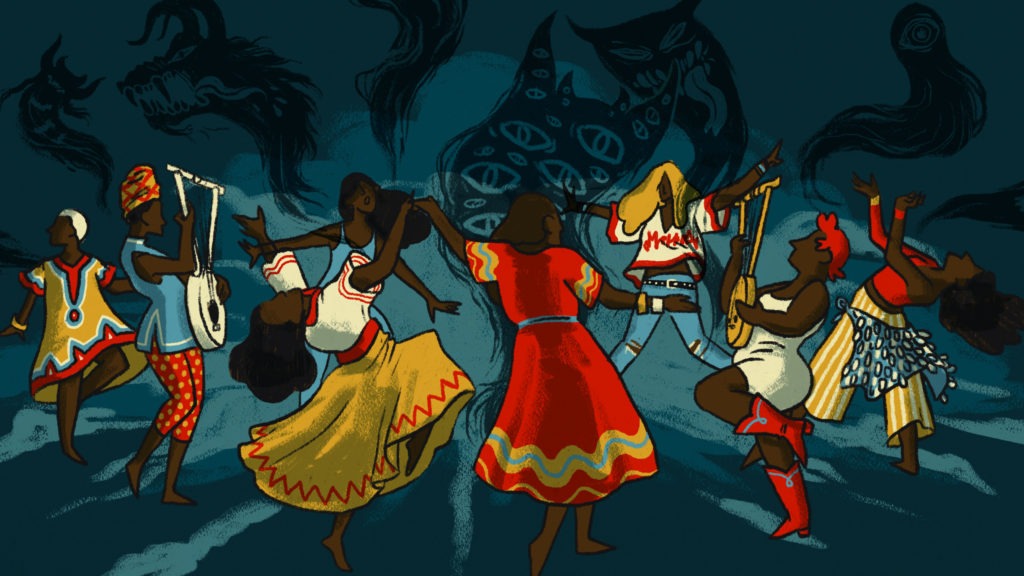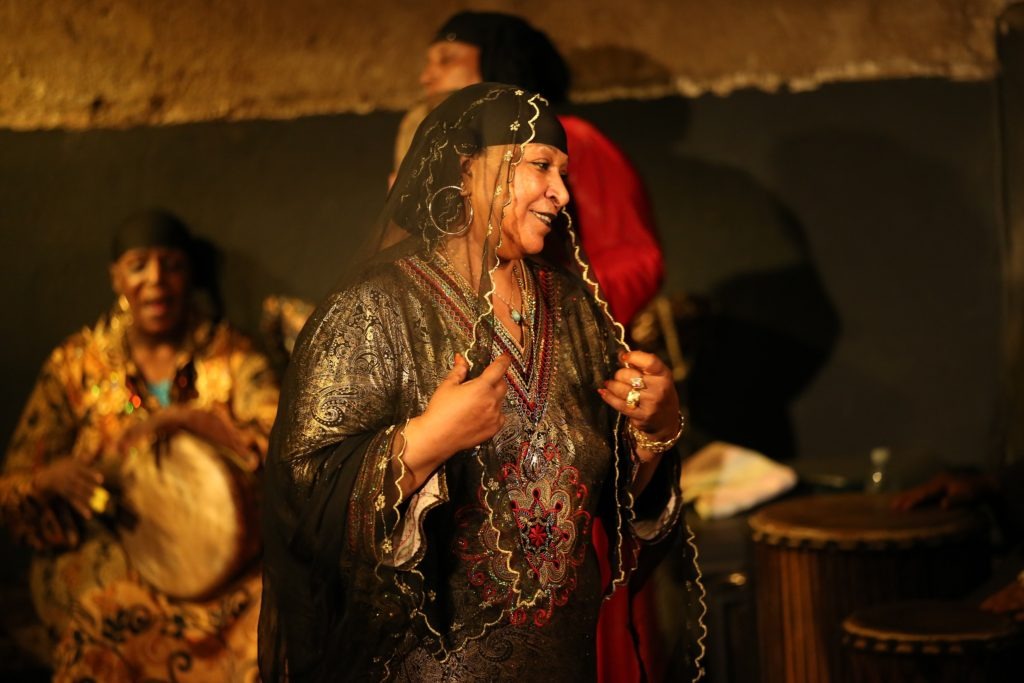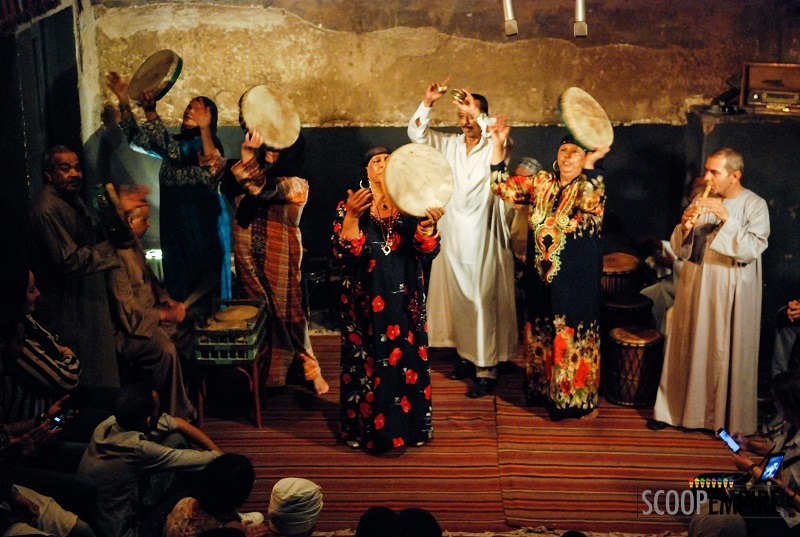If Egypt is known for one thing only, it would be its majestic, everlasting history spanning thousands of years. Granted, with a long history comes a lot of cultures. But the downside of that is the forms of arts and other aspects of culture that get lost and forgotten over the years. Especially if it’s passed down generationally only through word of mouth. One of these dying art forms is the art of Zar and the band that represents it, Mazaher.
The Art

Dating back to 1820, when Sudanese people started immigrating to Egypt, Zar became a unique form of human imprint in culture.
Historically, Zar was a ritual. Mostly used for exorcism and to banish evil spirits away. Sometimes even used with the intention of fertility and cleansing spiritually. One can think of it as the North African/Sub-Saharan iteration of Voodoo not just because of all the similarities in instruments, singing, and dancing but for the really obvious sacrificial endings of both rituals.
Socially, Zar holds a really significant place because of all of its benefits. They range from psychological or social in the form of group therapy, venting, gathering events. Physical because of the movement, and economic because it was a source of income for the practitioners.
Musically, it is performance art and singing. With various musical instruments native to the region such as the tanbura (a six-string lyre) and the mangour (a leather belt embroidered with many goat hooves), drums, and the phalanx (a 14 strings guitar) that has a robust affect on the ears. The latter is the only left aspect of Zar, currently performed by Mazaher.
The Band

Mazaher was formed in 2000 by Dr. Ahmed el-Maghrabi. They are the last of the Zar performers in Egypt since the art itself is passed down by word of mouth only. We attended their performance and witnessed the enticing, body-moving greatness they do in the short period of their performance. The performance starts with a song by the lead singer, standing center stage with the rest of the band seated behind her at their drums. With a charismatic look on her face and a gleam in her eyes, she holds her audience in a trance, the singing mixing with the drumming to produce a magical effect. Then Om Hassan starts dancing barefoot, moving her shoulders sideways, spinning around in circles.
On the other hand, the men are wearing the mangour (a leather belt made of goat hooves) and they shake their waists matching with the drumming and chant along with Om Sameh.
One of the most captivating songs is The Deer Hunter for its distinctive Arab flute as the main instrument backing up Om Sameh’s voice. The continual beating of the music and the women’s movements, shaking their heads back and forth, collectively hold the audience in an altered state of mind. The ceremony ends with a song called Schoolgirls, a message from a mother to her daughter: “Oh my moon, oh my moon, a tanned princess, beautiful and pretty going to school.”
The whole ritual is captivating, in every possible meaning of the word.
The Place
The Egyptian Center for Culture and Art – Makan, has established the Mazaher band for Zar. They perform there every Wednesday. The place itself is actually pretty cool for Egyptians and tourists alike. An old apartment from the 19th century, with bare walls crawling with cracks. Old metal doors and an interior design that’s of an old southern Egyptian house. The minute we entered through the door it was a trip back in time. A rediscovery of a part of our everlasting, diverse heritage as Egyptians. Which was the general feel of the whole audience natives and foreigners. Makan didn’t just help preserve a dying art form and a part of our culture. It’s saving an entire piece of Egyptian history, a time capsule for the new generation to witness the magic of Egypt.



